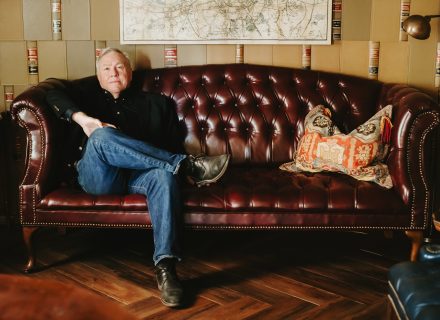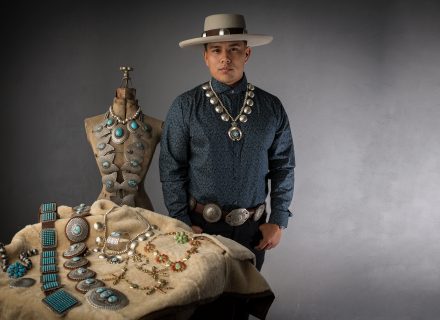An expansive Native American pottery exhibition presents the work of legendary matriarchs and their creatively courageous kin.
When Sacramento, California's Crocker Art Museum began collecting Native American pottery in earnest in 2011, it was fitting that the first piece would have a train on it. The museum’s founder, Edwin B. Crocker, served as legal counsel for Central Pacific Railroad during the building of the First Transcontinental Railroad and was the brother of Charles Crocker, one of the “Big Four” railroad tycoons.
“I went to Santa Fe and one of the first pieces that struck me was a pot by Barbara (Hopi, Acoma) and Joseph Cerno (Acoma) with a train on it,” Crocker chief curator Scott Shields says. “After that we made a list of the important potters and it kept growing and growing.”
The list began with three legendary pottery matriarchs and their descendants: Nampeyo (Hopi-Tewa), Maria Martinez (San Ildefonso), and Margaret Tafoya (Santa Clara). It expanded to include Helen Shupla (Santa Clara), Frog Woman 1 (Paqua Naha, Hopi-Tewa), and Frog Woman 2 (Joy Navasie, Hopi-Tewa). The museum also acquired pieces by contemporary potters like Tammy Garcia (Santa Clara), Nancy Youngblood (Santa Clara), Nathan Youngblood (Santa Clara), Rondina Huma (Hopi-Tewa), Al Qöyawayma (Hopi-Tewa), and Diego Romero (Cochiti).
“As the pieces have been acquired, they have been waiting to be seen,” Shields says. “After a while we decided we wanted to do a big show and unveil them all together.” That exhibition, Pueblo Dynasties: Master Potters from Matriarchs to Contemporaries, was eight years in the making and features some 200 pieces by premier potters.
The creating of functional pottery in the American Southwest goes back at least 2,000 years; skills are passed down from generation to generation. Geographical variations in clay and preferences in design and shape became associated with permanent villages, or pueblos. But it wasn’t until the railroad arrived with visitors in the late 1800s that a specific market was created for art pottery. Over time, what was originally functional became elaborate, detailed, personal, and collectible.
“Making pottery is a laborious process; it’s amazing that anyone can accomplish it,” Shields says. “First the earth is dug and refined into usable clay. In most cases it is then coiled into pots. The artist then has to polish the pots, and if the pots are decorated, they’re often painted with a one-strand yucca brush — oftentimes free-hand. Then they’re fired in the earth. Once you know how they’re made, they become even more gorgeous.”
Pueblo Dynasties: Master Potters from Matriarchs to Contemporaries is on view at the Crocker Art Museum in Sacramento, California, through January 5, 2020. Also on view: When I Remember I See Red: American Indian Art and Activism in California (through January 26). crockerart.org
Photography: Courtesy of Crocker Art Museum
From our January 2020 issue.





















